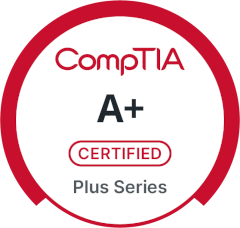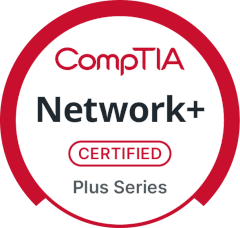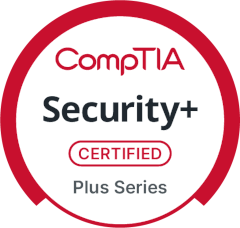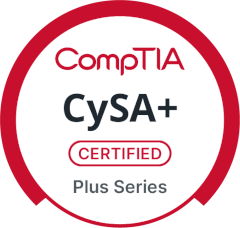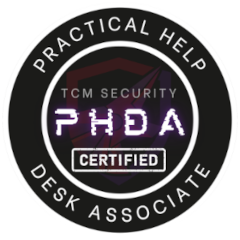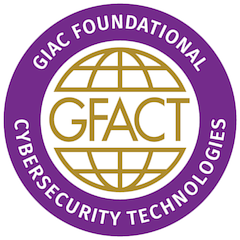USAF Veteran with a Summa Cum Laude BS in Cyber Operations from DSU, exploring the vast landscape of information technology one day at a time. ἀρετή

TCM Security's Practical Help Desk Course Review
From Logic Gates to Active Directory
May 17, 2025 · 937 words · 4 min read
Table of Contents
- Intro
- Course Overview/Instructor Impact
- Key Concepts
- Practical Troubleshooting Examples
- Operating System (OS) Administration
- Active Directory Management
- Final Thoughts
Intro
After completing the Practical Help Desk Course and passing my Practical Help Desk Associate Exam, I felt the need to create a review, simply because I still can’t believe this well-curated material is available for ZERO dollars. Instructor Andrew Bellini’s passion is palpable, so much so that he inspired me to finally build my first PC, coupled with the fact that the Windows VM we created in the course crashed my laptop, partly my fault for having one too many YouTube tabs open between music and Deterministic Finite Automatas, but I digress. I’m looking forward to finding the time and taking the IoT course along with the Practical IoT Pentest Associate (PIPA). Still, first I need to find a job lol.
Course Overview and Instructor Impact
Canadian Electrical Engineer/Ethical Hacker Andrew Bellini is passionate about tech. With his background, it’s easy to assume he loves hardware, and he shows it. One thing he mentioned that resonated with me was how he felt that some core concepts weren’t taught thoroughly during his formal education. This rings true for me, both about my military service and recent completion of my Bachelor’s. It is no fault of my instructors since you can only cover so much material quickly, and sometimes the best lessons are learned on the job/out in the wild.
Key Technical Concepts Covered:
- Computer Architecture Fundamentals: Logic gates, truth tables (AND, OR, NOT, NAND, NOR, XOR, XNOR)/(Air Force Electronic Principles Flashbacks)
- Hardware Components: CPU sockets (PGA/BGA), thermal paste application, heat sink functionality, memory standards (DDR 1-4), storage comparisons (SSD vs. HDD), power supply units, graphics processors, motherboards, and BIOS
- Boot Process: POST (Power-On Self Test) and troubleshooting startup issues
- Virtualization: Type 2 hypervisors, VMware ESXi, differentiating between VMs and containers/(Refresher from material covered in my college courses)
Practical Troubleshooting Scenarios
Ticket #1: Computer Won’t Power On
Although this line of thinking is logical for someone knowledgeable about computer hardware, explaining the thought process to newcomers is invaluable.
- Checking the power switch on the tower’s back
- Verifying power connections at both the tower and outlet
- Opening the case to inspect the motherboard connections
- Testing the CMOS battery
- Replacing the power supply unit if necessary
- Using VM snapshots for system recovery
Ticket #2: User Account Management
Many of these tasks were familiar to me simply from my college courses. Still, I took notes with Obsidian in hopes of learning something new.
- Adding users to Windows computers
- Configuring password change requirements upon login
- Adding users to administrative groups
- Understanding local vs. domain accounts
- Managing software installation/uninstallation
- Configuring file/folder permissions and inheritance
Operating System Administration
He had separate sections covering each OS and its respective administrative settings, not in great depth, because that would take forever, but enough to comfortably navigate to different domains required for the exam.
Windows Administration
- Event Viewer for system diagnostics
- Device Manager and driver management
- Task Manager and services monitoring
- Windows Registry configuration
- Command Prompt utilization
- Task Scheduler for automation
Linux Administration
- Directory structure (/bin, /sbin, /etc)
- File permission management
- Practical chmod exercises
- PATH configuration
- SSH key pair implementation
- Remote desktop connections (RDP, Remmina)
- VNC setup
Another ticket interrupt he had us do involved creating two user accounts with expiring passwords upon initial login, creating a folder in the root folder, and configuring permissions for said folder. We had to make the root user the owner, provide them with full permissions along with the newly created users, and finally exclude all permissions for everyone else (chmod 770 directoryname/). Although something like this may appear simple, understanding basic permissions and how to configure them is essential for basic security practices, a form of adding a layer of protection.
Active Directory Management
I’ve had a fair bit of practice with Active Directory, and I learned about the domain relationships within trees thanks to Andrew for the first time. I think it’s crazy how something as simple as the structure is overlooked when teaching others, and I’m just thankful he took the time to cover it and these other items:
- Physical components overview
- Logical components and administrative boundaries
- Organizational units for object grouping
- Non-container objects (users, computers, groups, printers, GPOs)
- Domain relationships within trees
- Trust relationships for resource sharing
- Forest structure as the highest-level container
PowerShell Fundamentals
I’ve dabbled lightly with Powershell scripting, so this was a breath of fresh air for me, he covered basics such as:
- User-friendly syntax basics
- Task automation capabilities
- Module implementation for enhanced scripting
Final Thoughts
I’m thankful to TCM Security and Andrew Bellini for offering this course for free. If you’re hesitant about taking this course and don’t have formal IT experience like I do, I highly recommend it! I recommend taking the exam since it is only $199 (much cheaper than other offerings). However, I got it for $149 on sale. Fortunately, I’m eligible for the Military discount (20%) for TCM’s offerings. So, although I may be biased towards TCM Security, don’t let it detract from how well-crafted their courses are. I recommend this course to anyone interested in diving into IT headfirst. The course is ~17 hours long, and it took me about 3 weeks to complete due to obligations with school and family. Still, completing it in a much shorter time frame is possible, just be sure to take notes!
